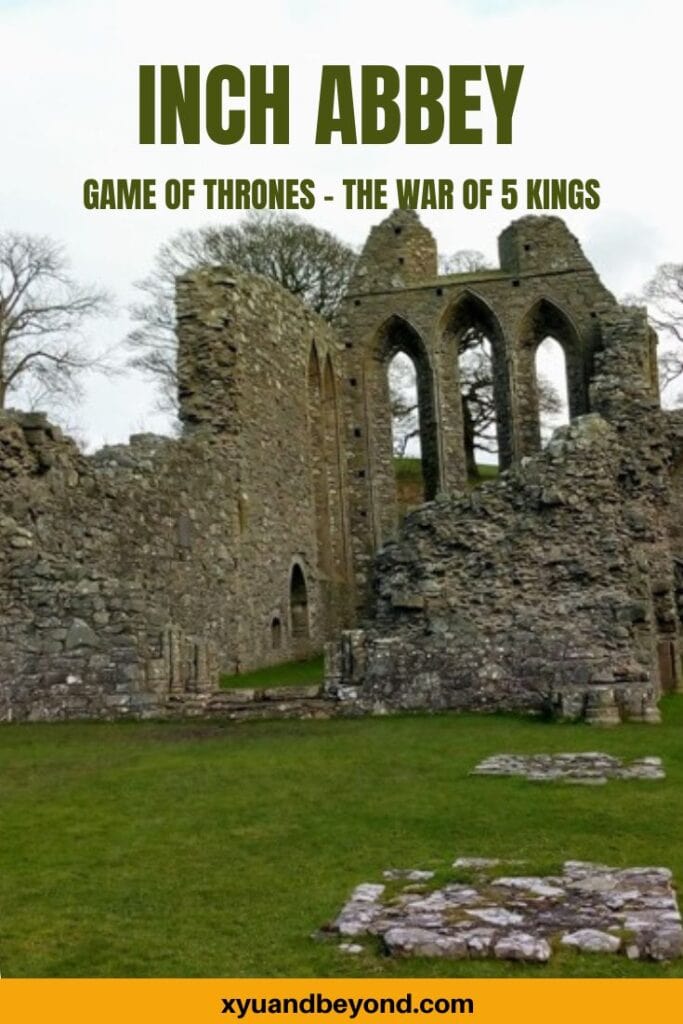Inch Abbey Northern Ireland and the Game of Thrones
Inch Abbey is a large ruined monastery that sits northwest of Downpatrick in Northern Ireland. Inch was an island in the Quoile Marshes bordered by the River Quoile. Inch Abbey lies in the hollow between two of the hills and Downpatrick Cathedral can be seen across the river.
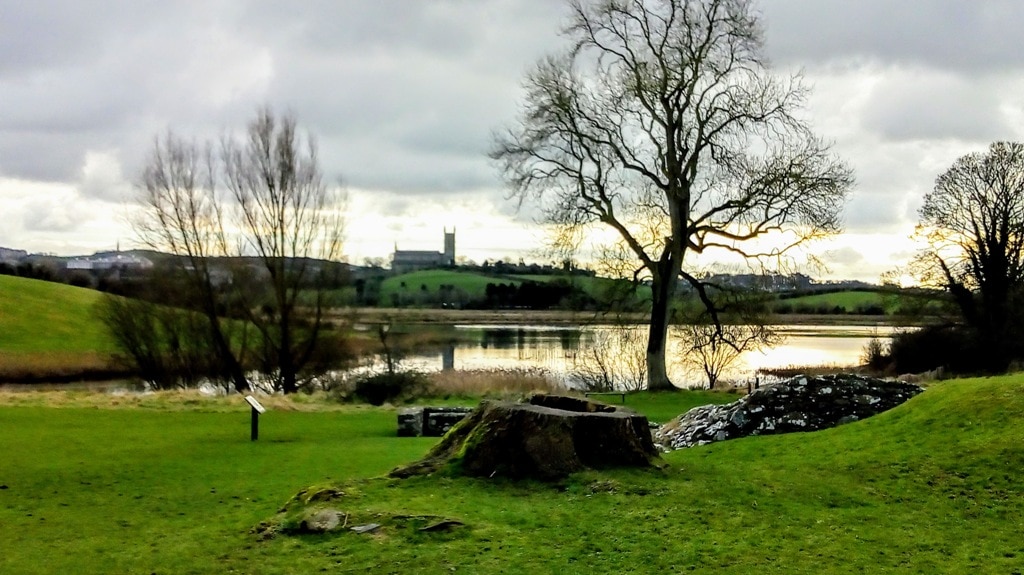
Planning a dream trip to Ireland? Everything you need to know
Inch Abbey history
Inch has been the site of an Abbey dating back to the year 800. The site of Inch Abbey’s original wooden buildings this early monastery was attacked and plundered in 1001 by a Viking raid led by Sitric Silkbeard and again by the native Irish in 1149. The original Inch Abbey was located on the large hill behind the east window overlooking Strangford Lough which surrounded the island until the 1700s.
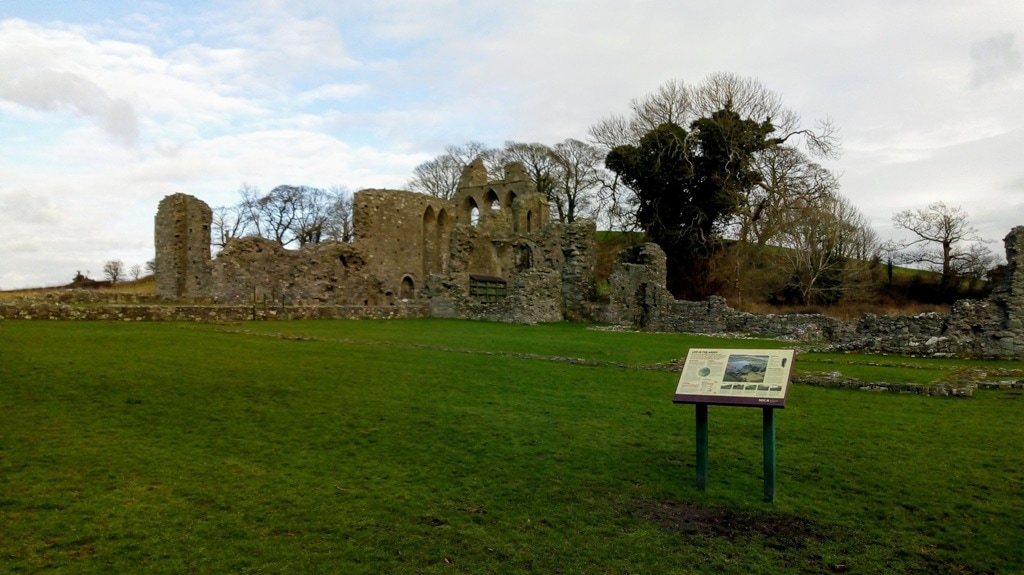
In 800 AD the settlement on the site was probably entirely made of wood with a church, monk cells, gardens, orchards and agricultural land for possibly sheep or cattle. In 1001 when the Vikings attacked Inis Cumhscraigh (which was the pre-Norman settlement) many prisoners were carried off to become slaves. The Normans arrived in 1177 and destroyed the settlement.
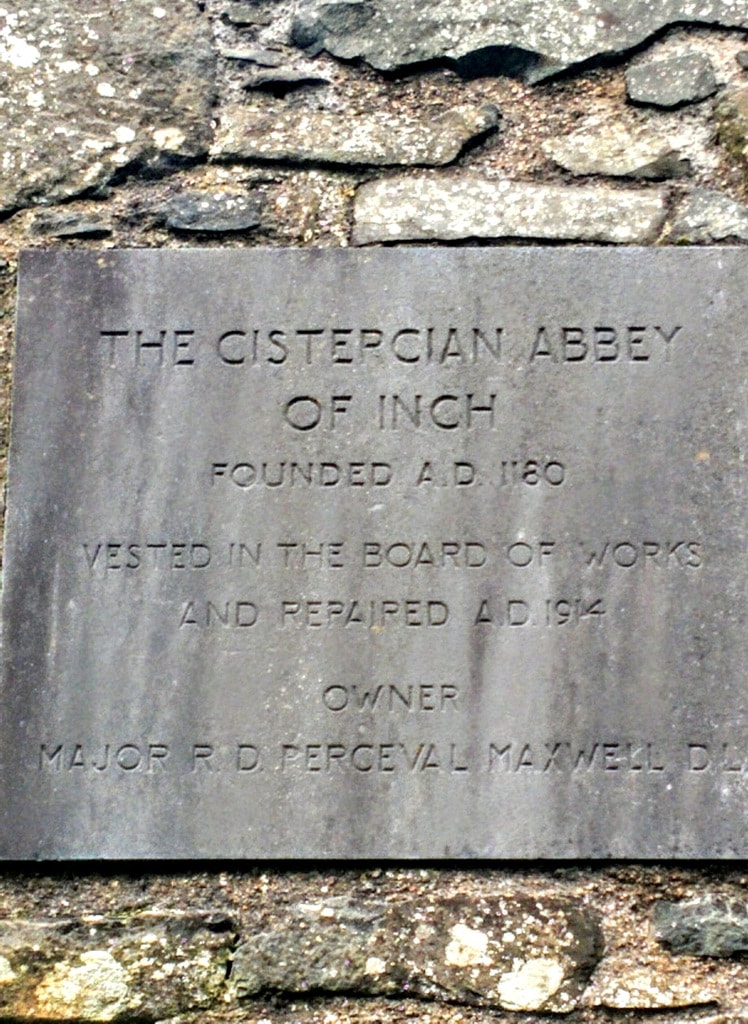
John de Courcy (c.1150-c.1219) was a Norman knight who went to Ulster during the 12 century to help the King of Leinster recover his kingdom. By 1185 he was made a vigilante of Ireland by King Henry II.
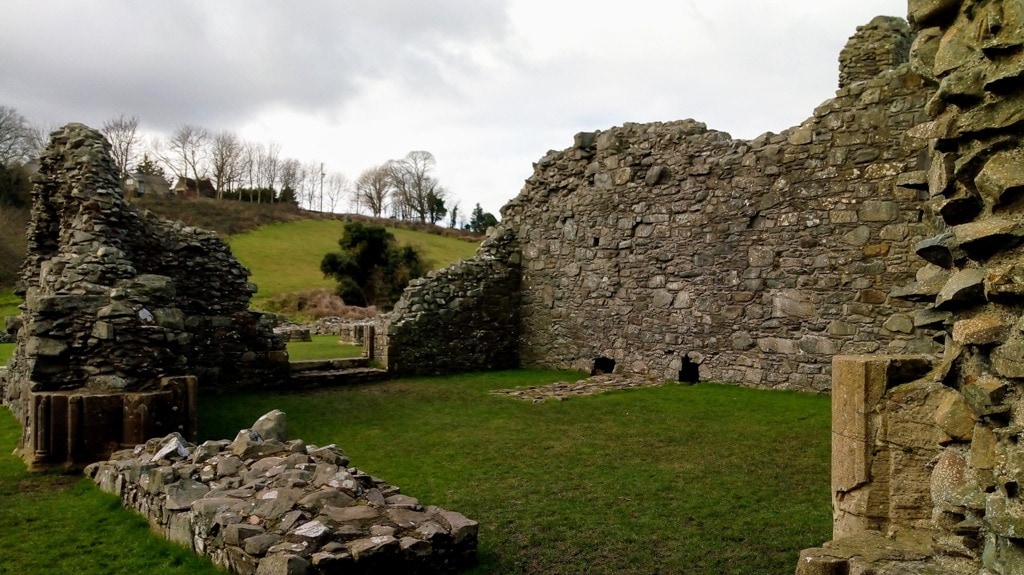
John de Courcy destroyed the abbey at Erenagh during the 1177 wars and massacred the Irish Augustinian monks. In an act of repentance, he and his wife Alfreca established Inch Abbey and brought Monks from England from the Furness Abbey in Lancashire in 1180 along with the monks who hadn’t been killed at Erenagh. One of these monks, Jocelin, wrote The Life and Times of Saint Patrick here. Across the water is Down Cathedral where Patrick is buried with Saints Columba and Brigid. De Courcy also founded Grey Abbey in County Down and built castles at Carrickfergus and Dundrum.
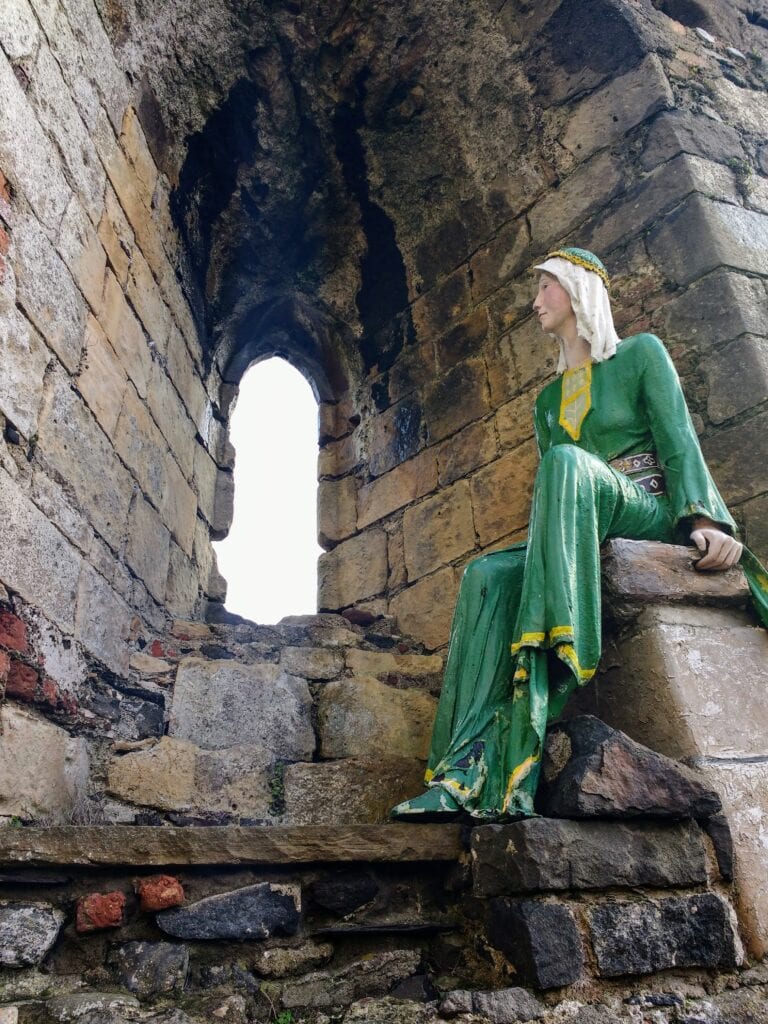
The Cistercian order was founded in late 11th century France to pursue a strictly communal life of worship, study and manual work. The Cistercian Rule insisted that Monasteries should be sited far from the distractions of everyday affairs, and in its beautiful riverside situation Inch perfectly illustrates this preference for solitude.
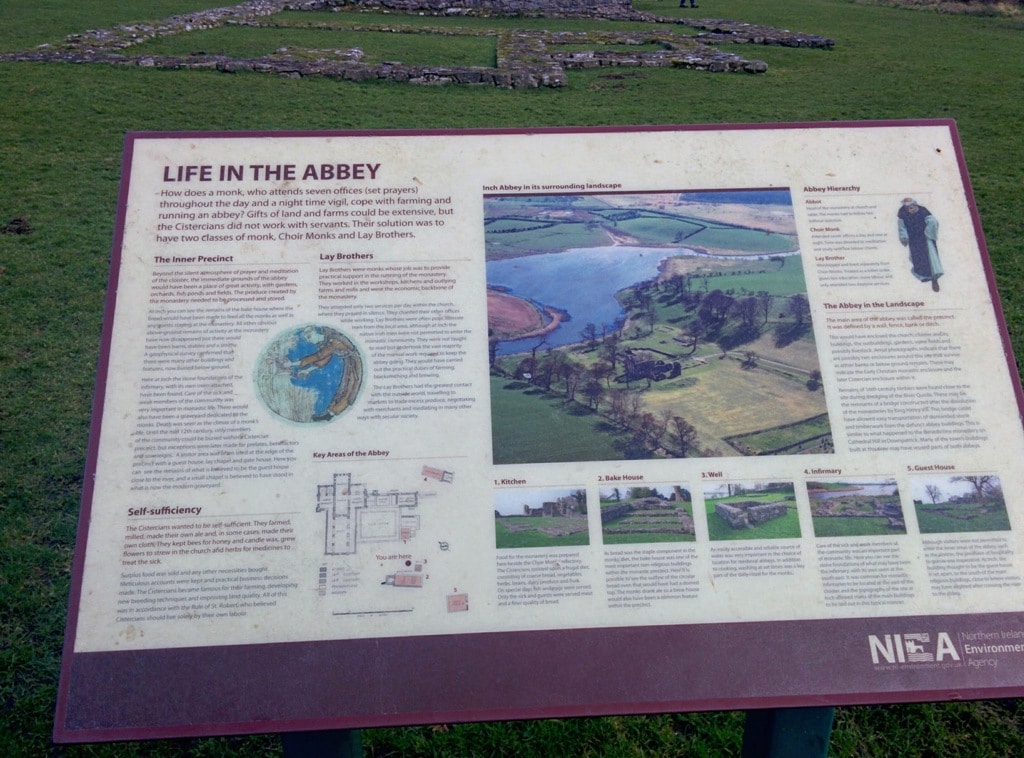
The new Inch Abbey was built to a typical Cistercian layout, a large cross-shaped church with a low tower at the crossing of the north and south transept. The cloister is situated to the south of the church. Along the east of the cloister are the ruins of a vestry, chapter house, parlour and day room.
To the south were the refectory and kitchen. There was a well and a bakehouse situated to the southwest of the cloister. The abbey, which retained a strong English influence refusing to accept Irish monks into the community, was remodelled in the 15th century, before being suppressed in 1541 by King Henry’s Reformation.
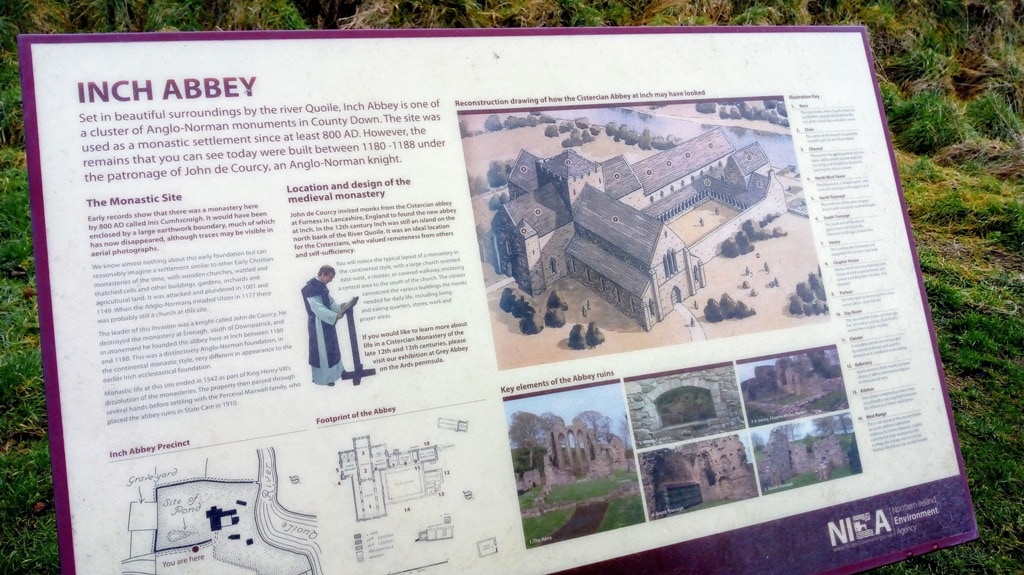
Today’s ruins cover several acres and you can see the remaining walls and foundations of the church with the north and south transepts, the vestry, a small chapter house, the long day-room, the refectory, kitchen, infirmary, a well and the bakehouse.
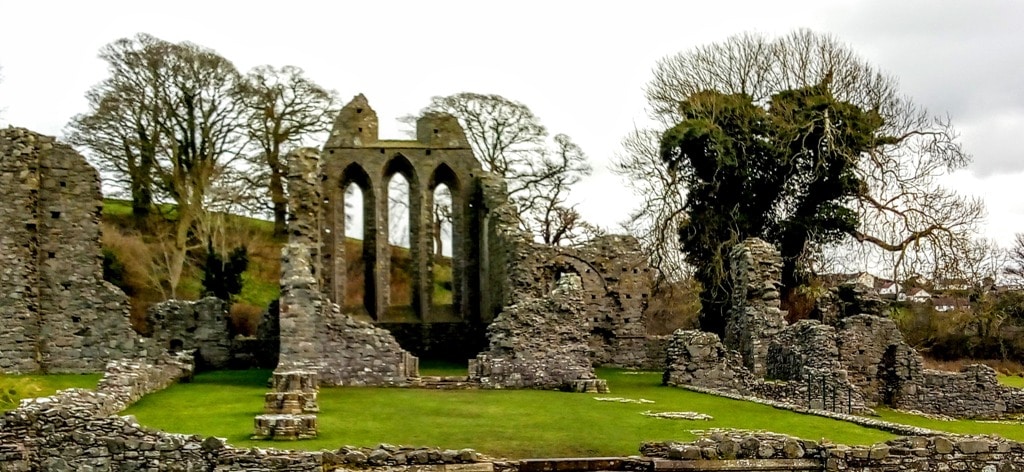
The parish occupies a central position within the pre-Norman enclosure. The Cistercians often kept themselves separate from the commoners and built a chapel for them at the edges of the Abbey. The original Chapel was assessed in 1306 but the site was abandoned in 1730 when a new church was constructed in Ballynacraig.
In 1541 Inch Abbey was granted, with its lands, to Gerald, Earl of Kildare. By the late 19th century the buildings were badly ruined and overgrown, but excavation and repairs were carried out in 1914 when many of the architectural details were restored in cement.
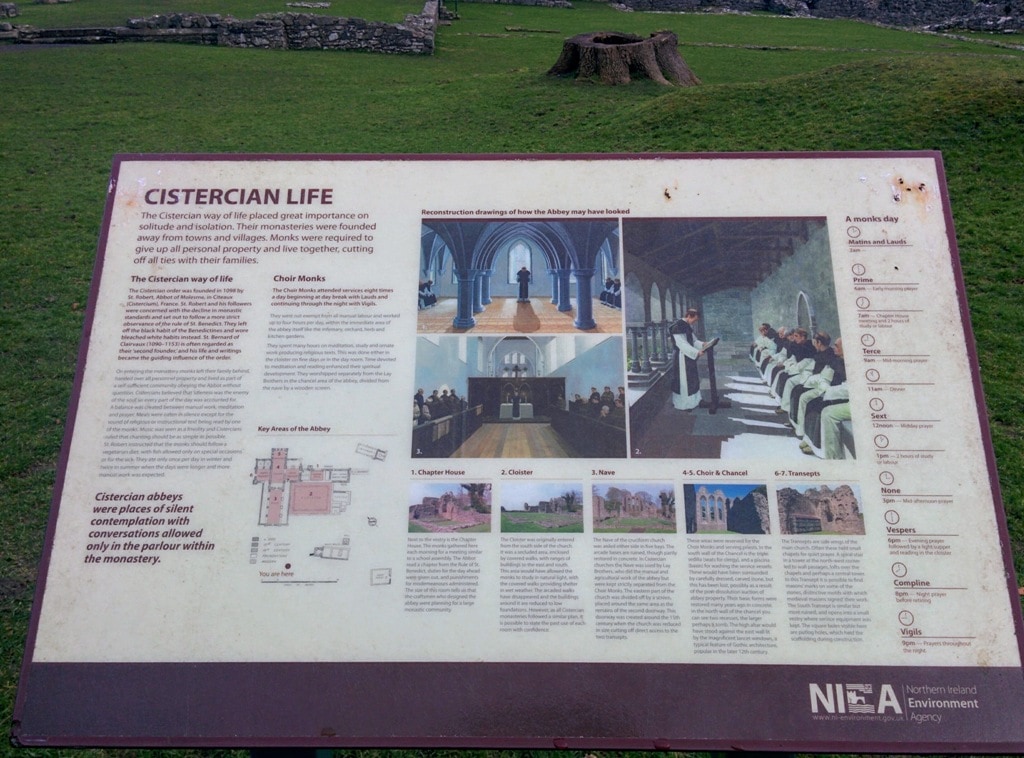
Inch Abbey and Game of Thrones Northern Ireland
Inch Abbey and parts of the surrounding area have been featured as locations in Game of Thrones in series one and two when it provided the backdrop for ‘The Twins’, Walder Frey’s castles in the Riverlands. It is here that Lady Catelyn Stark learns of the execution of her husband Eddard and vows revenge.
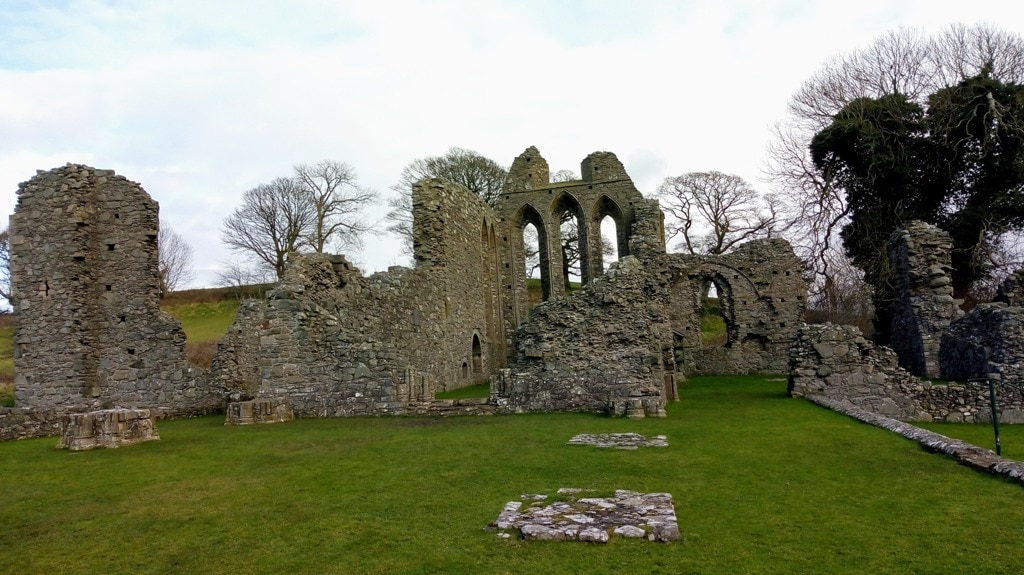
Game of Thrones Riverrun filming location
Inch Abbey was also the site used as Robb Stark’s Camp, Riverrun in season one of Game of Thrones when he captured Jaime Lannister at the Battle of the Whispering Wood during the War of the 5 Kings. As well as the Camp of the Houses of Riverlands and the North.
How to get to Inch Abbey
The ruins of the ancient Cistercian Abbey can be reached with an easy five-minute stroll from the Inch Abbey Railway station. You can explore the ruins, take in the views, and in the summer it’s a lovely spot for a picnic.
Don’t forget to visit all the Game of Thrones doors locations when visiting the GOT sites in Northern Ireland.
You might also like to read
Epic Game of Thrones Ireland road trip
101 Landmarks in Northern Ireland
Mellifont Abbey and the legend of Ireland’s Helen of Troy
Visiting Jerpoint Abbey Kilkenny
Medieval Ireland – the Crusaders in Limerick
101 Landmarks in Ireland to see
Pin it to save it
